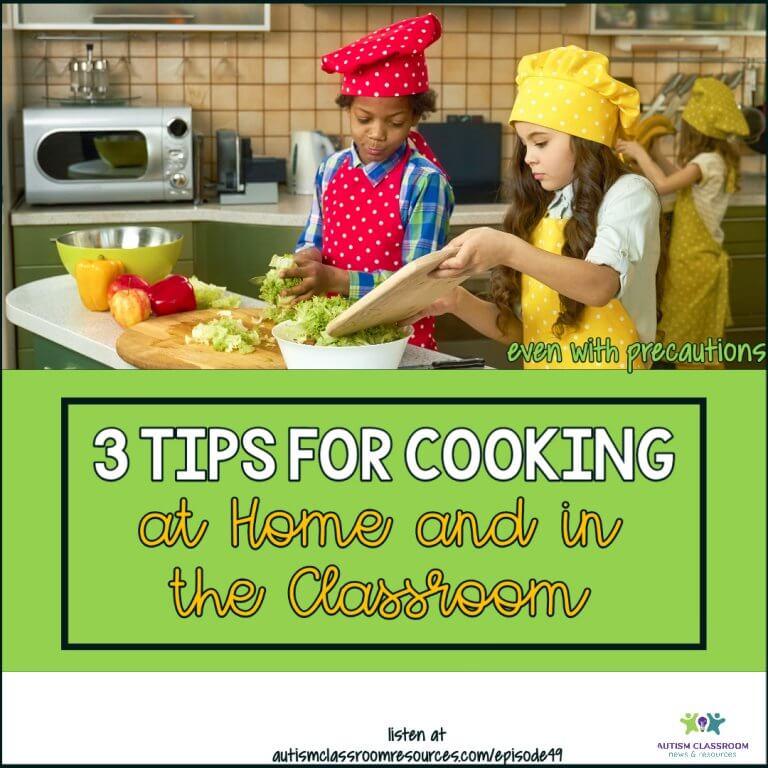I love cooking in the classroom. It’s one of my favorite activities to use with younger students and with life skills students. One of the things I like is that students are motivated by it. Because who doesn’t like to eat, right? Another is the number of skills you can build and teach with cooking.
![Cooking in the Curriculum During Covid-19 [child pouring from a measuring cup into a mixing bowl]](https://autismclassroomresources.com/wp-content/uploads/2020/09/Cooking-in-the-Classroom-Ep-49-683x1024.jpg)
But what about cooking now, as I’m writing and recording this–in the middle of the pandemic? How do you cook in the classroom with virus precautions? Or how do you use cooking as a teaching strategy in distance learning?
In this episode I’ve got tips that address just those questions. I’ve got tips about how to cook in the classroom during the pandemic as well as tips for how to incorporate cooking into distance learning.
Why Use Cooking in the Classroom?
Let’s start with why I like cooking in the classroom. First, it is a highly motivating activity for many students (and staff) because you get to eat what you cook. It also takes learning out of the typical sit at a desk and attend and can include more movement and sensory activities. Finally, it’s a good life skill for all of our students, regardless of their age.
But the main reason I like cooking in the classroom is the number of skills that you can embed in an activity that students may see as fun. I love anything where students don’t realize they are learning. Let’s talk for a minute about what skills you can teach with cooking.
Receptive and Expressive Language
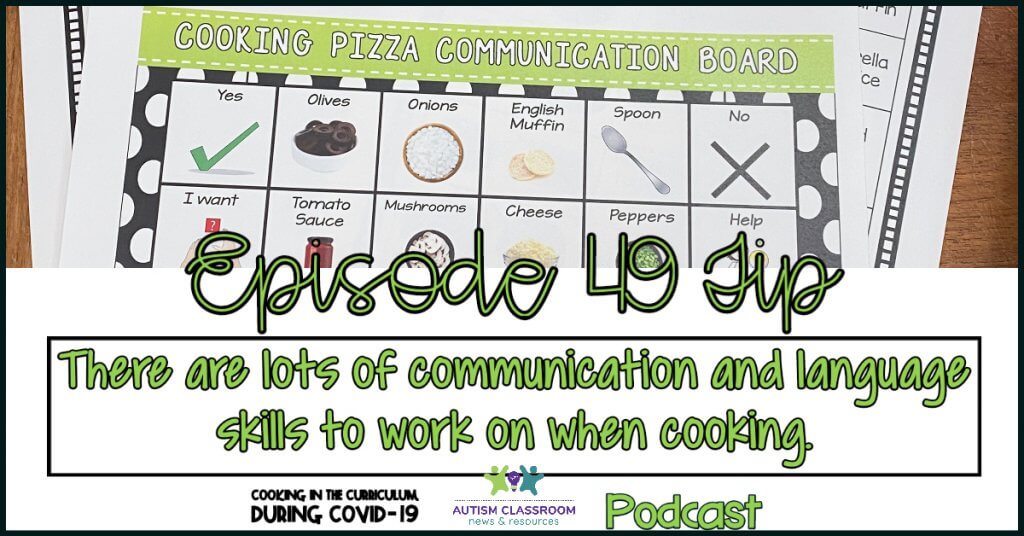
One of the main things I love teaching in cooking are language and communication skills. Students can learn vocabulary around food and the kitchen including names of ingredients, processes (e.g., stirring) and tools. You can also teach sequencing, of being able to describe the steps they took in the recipe. They can work on describing tastes and activities they participated in. Being able to talk about an experience they participated in is an important skill for many of our students. And they can work on answering questions about the experience.
Reading and Literacy
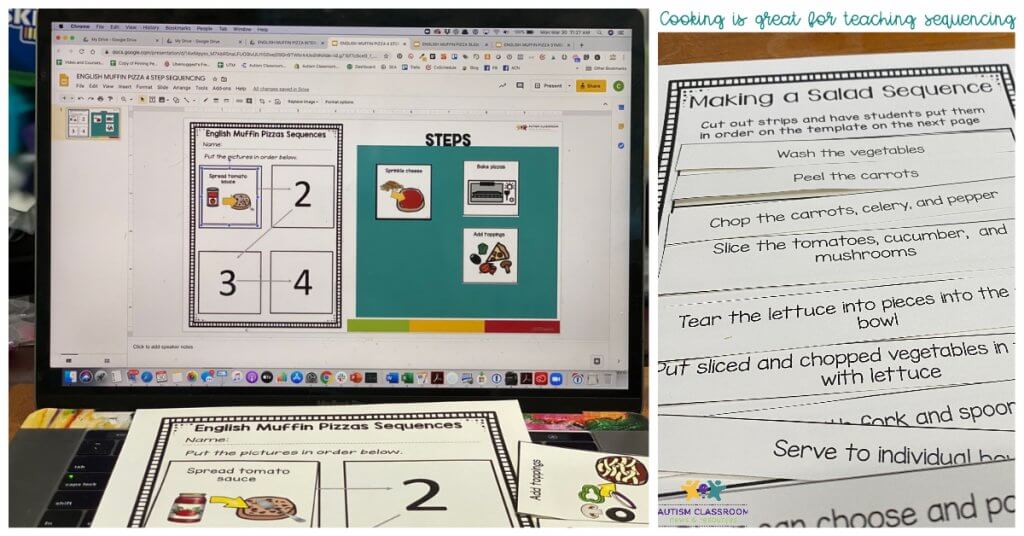
Functional reading is so important for many of our students. Reading a recipe is one way to incorporate that into the classroom. Sequencing events based on the recipe is another. Reading and following the directions allow you to check for reading (and language) comprehension. You can even include writing activities that go along with the cooking.
Math Skills
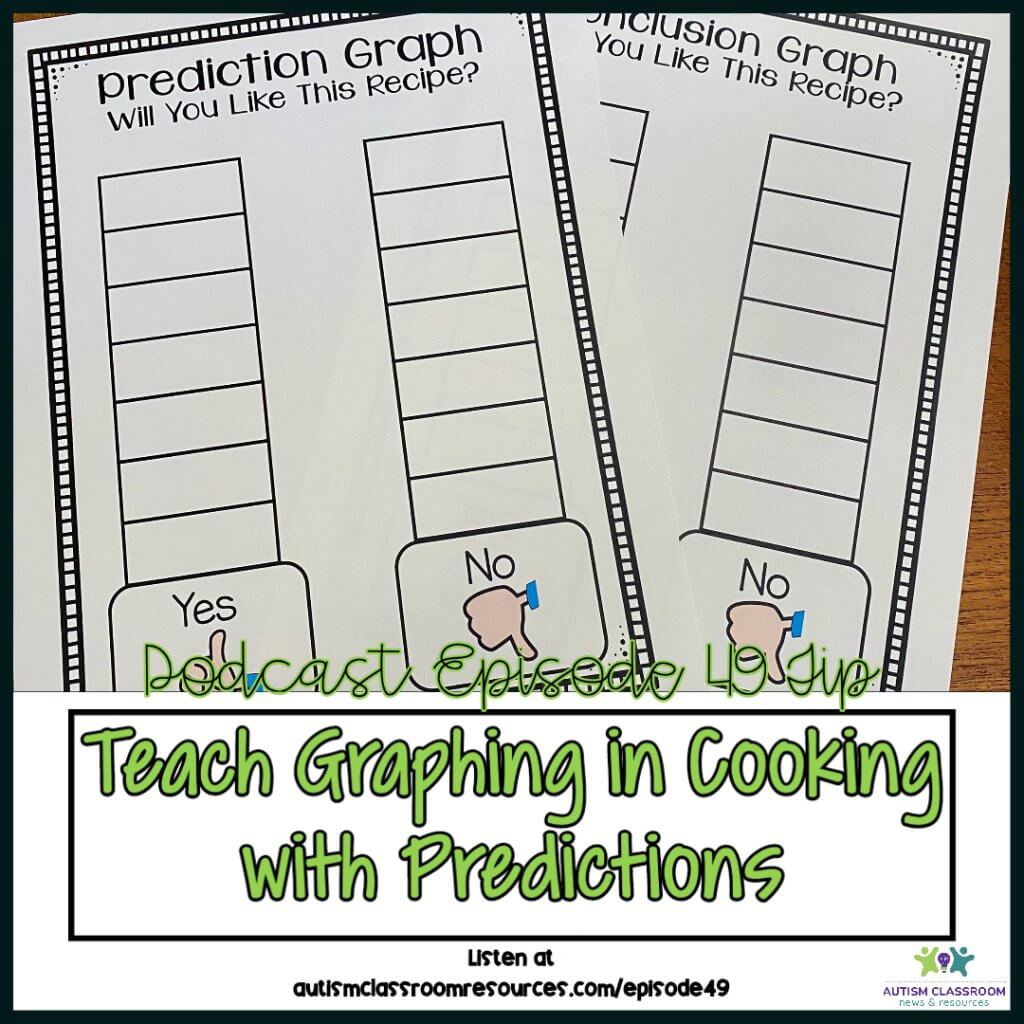
There are lots of math skills in cooking, of course. Counting ingredients and measurement are two kinds of math skills we commonly think about. But you can also build more math by doubling or halving recipes, so students have to multiple or divide amounts. You can have students predict if they will like what they are cooking. They can graph the predictions before and the results after they try the food. Then they can make number sentences from the data.
Motor Skills and Life Skills
And of course there are lots of motor skills that can be practiced from cutting/ slicing, tearing (e.g., lettuce), stirring, beating eggs, tossing salad, opening and closing containers and more. Plus, students can learn to use kitchen equipment like mixers, blenders, stoves and ovens.
Science
There are tons of science goals that can be addressed. Make something with yeast or baking powder and study the chemical reaction. Watch the rise of breads and examine how the amount of yeast or the climate / weather relates to high it rises. Study the electricity that makes the blender run. Discuss solids, liquids and gas when you boil water from ice.
And of course there are lots more goals that can be learned as part of cooking like trying new foods, setting the table, etc.
Cooking in the Classroom (and at Home) in a Pandemic
So, given the amazing things you can teach through cooking, how do you include it in your curriculum safely and effectively? Here are ways you can incorporate into today’s classroom or into your distance learning.
Cooking In the Classroom During Covid
The first tip is to choose recipes that can be cooked with each student having his or her own ingredients. While it does limit the opportunity to work on collaboration in group activities during cooking (one goal I really like to address), it prevents germ contamination. And I should say that Tip 1 is really useful in our present situation during the Coronavirus, but it’s also helpful with any situations with health concerns in your classroom.
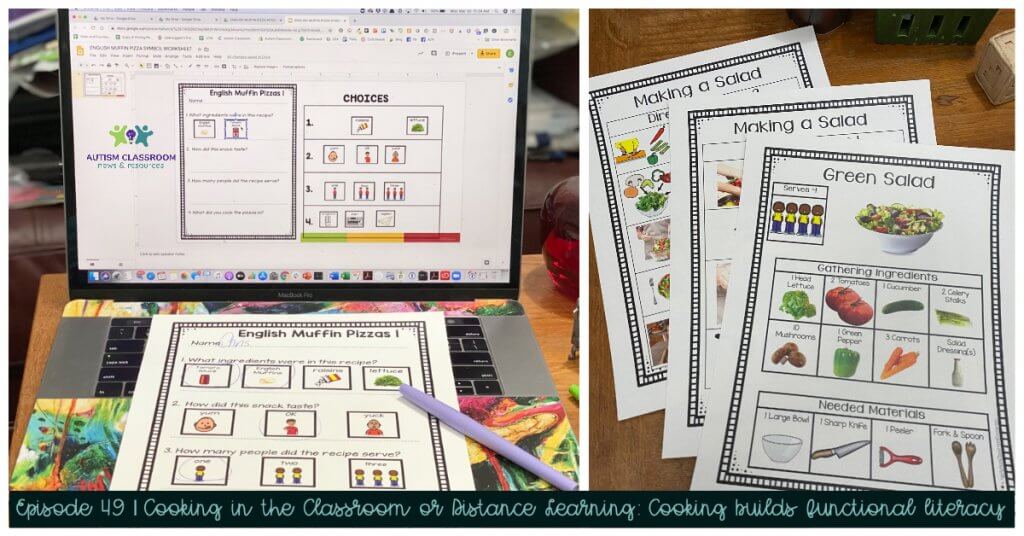
What does this mean in terms of what you choose to cook? Here are some ideas. Any recipe that a student makes and eats his own item will work. For instance, in my recipe for Tossed Green Salad, I originally was thinking it would be one you could divide up jobs for and have students work together. But, you can still have each student have his or her own vegetables to clean, chop and toss so they eat their own salad rather than a full tossed salad for the group. English Muffin Pizza, another one in my stores, is another one that students can make their own pizza. And the recipe and materials are actually set up that way. Ants on a log (raisins in peanut butter or cream cheese on celery) are another one.
Cooking in Distance Learning with Family
So what if you are teaching at a distance? One of my big tips for cooking is to make the experience last through the week. Because there are so many activities you can do with it, you can spread it out. That works well in distance learning.
Cook with the Family: Follow up in Class
One way to cook in distance learning is to send the recipe home and have the family cook the item. This helps them fit learning into their household routines and integrate learning into everyday activities. When you do this, though, just make sure that you give them specific instructions on what skills are being addressed and how. Then, you could follow up in your face-to-face video conference with sequencing activities, comprehension and other expansion activities.
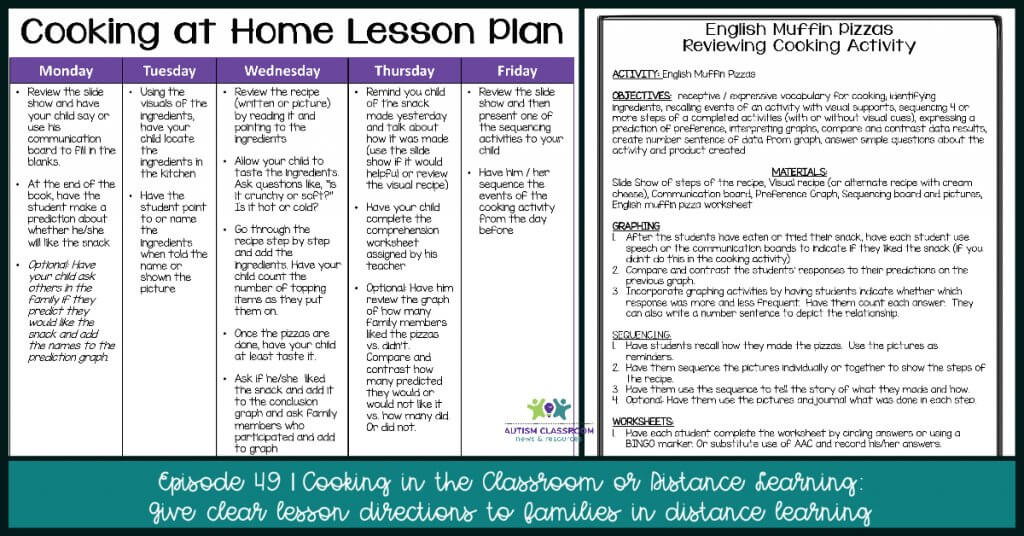
Cooking in the Class: Follow up at Home
Another way to approach it in distance or hybrid learning is to cook as a group. Have students bring ingredients to the computer or take the device to the kitchen. Then everyone can cook with your direction via video conference. Or for hybrid situations, cook the item in the classroom. Then, send materials home (virtually or in print) for students to complete the follow up activities (e.g., comprehension, sequencing) at home.
Cooking Units
Now, if you are looking for ideas and tools to make all of this work, I’ve got 2 cooking units in my stores. And they are already distance-adapted and they would work in either situation. Plus, they each include lesson plans to send home with specific goals and steps for families to complete. There is even a week-long lesson plan for each one that can be sent home to help parents pace out their activities.
Each one includes the following and all the interactive activities have been included in print and Google Slides™️.
- Lesson Plans for Previewing / Preteaching Cooking Activity, Cooking Activity, Reviewing, and Taking Data
- Communication board tailored to the recipe
- Visual recipes and written recipe cards
- Comprehension worksheets with and without pictures
- Sequencing activities
- And prediction graphs and activities

